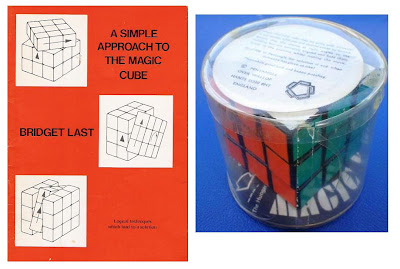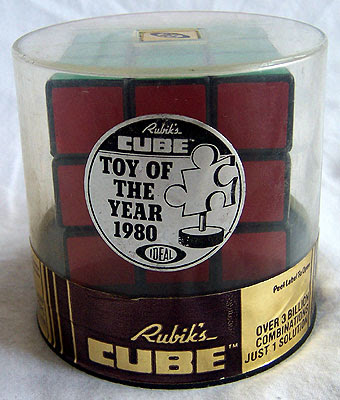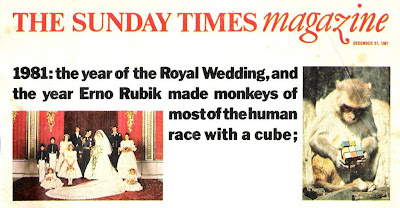
2008-12-28 00:32:12 上传
下载附件 (18.07 KB)

 Bűvös Kocka - Magic Cube.
Bűvös Kocka - Magic Cube. Bridget Last wrote "A Simple Approach To The Magic Cube" in 1980 - and it was published by Tarquin Publications of Diss, Norfolk. Was this the first Cube book published in England? Meanwhile, Pentangle, puzzle specialists of Over Wallop, Hants, imported small numbers of Magic Cubes. But nobody could guess what would happen next!
Bridget Last wrote "A Simple Approach To The Magic Cube" in 1980 - and it was published by Tarquin Publications of Diss, Norfolk. Was this the first Cube book published in England? Meanwhile, Pentangle, puzzle specialists of Over Wallop, Hants, imported small numbers of Magic Cubes. But nobody could guess what would happen next! One of the first Rubik's Cubes - Toy of The Year 1980 and 1981 in the UK. The first consignment arrived here just before Christmas 1980 and the British association Of Toy Retailers, noting the intense interest in the product, voted it top toy. A shortage in supplies resulted in many cheap imitations appearing. The country was finally fully stocked with Rubik's Cubes in the spring of 1981.
One of the first Rubik's Cubes - Toy of The Year 1980 and 1981 in the UK. The first consignment arrived here just before Christmas 1980 and the British association Of Toy Retailers, noting the intense interest in the product, voted it top toy. A shortage in supplies resulted in many cheap imitations appearing. The country was finally fully stocked with Rubik's Cubes in the spring of 1981. 
 附件: 1980-Rubiks-Cube.jpg (2008-12-28 00:32:12, 18.07 KB) / 下载次数 4
附件: 1980-Rubiks-Cube.jpg (2008-12-28 00:32:12, 18.07 KB) / 下载次数 4



| 欢迎光临 魔方吧·中文魔方俱乐部 (http://www.mf8-china.com/) | Powered by Discuz! X2 |